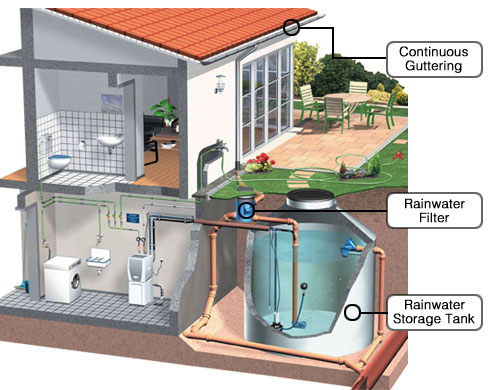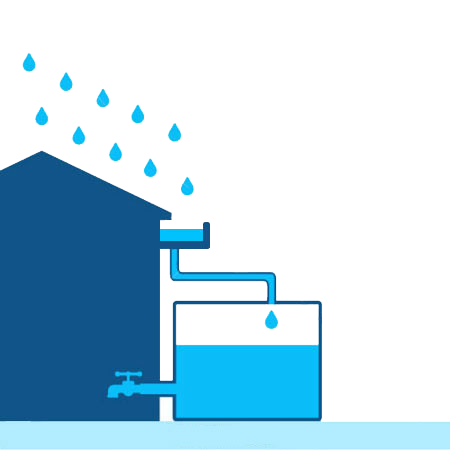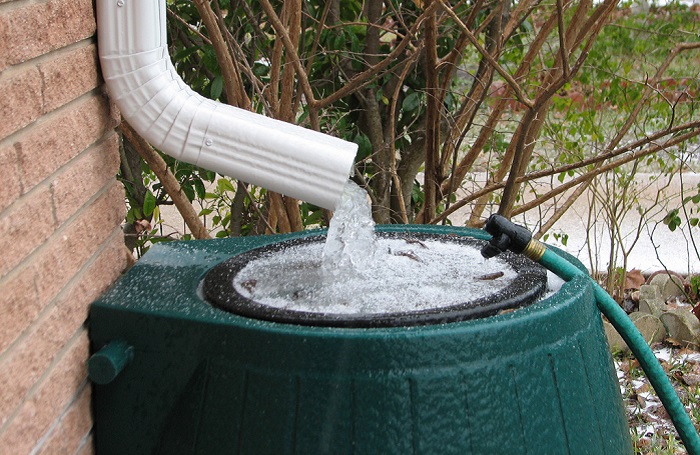
Rainwater harvesting methods: Passive Collection Methods
Collecting rainwater and making good use of it, is a great way to support the green movement and a way to make our homes more sustainable. By catching the rainwater and storing it for future use we make sure our property and homes are safe. Whether you decide to use the captured water in or outside your home, it is a great way to make your home water efficient.
There are two types of systems you can use to harvest rainwater, one being the active harvesting methods and the other the passive harvesting method. When you wish to use your collected rainwater inside your house for flushing the toilet or even for drinking (after the proper distillation of course), then an active harvesting method is the best approach and a good investment. If you are new to rainwater harvesting and you are looking for an inexpensive method then the passive collection method may be a better solution.
The passive harvesting system does not need any mechanical methods during the collections or distribution of the rainwater. No pumps, required filters or electricity are needed in order for this method to run effectively. It is simply a method that allows you to capture the rainwater and store it until you need it for your land. The design is simple, it can be built easily and it does not require a lot of investment. Passive systems are low maintenance and are able to function well in most landscapes.
Here are 4 methods how to harvest rainwater passively:
The rainwater from these systems is for outside use in rural and urban areas of all sizes. If you do however wish to make use of the rainwater in your home then a filtration and pumping system needs to be installed. If you wish to drink your harvest water from time to time without big installations, then a small water filter can be bought to make sure the water are clean before drinking.
– The Dry System:
This system is designed using pipes running directly from the gutter into the tank. These pipes stay “dry” after the rain as they do not keep water inside them. In order for this system to function properly, the gutter and pipes need to be higher than the storage tank. This is a very simple system that can be installed when you have a simple roof layout and no obstacles that will get in the way of the piping route. The water collected has a lower chance of being contaminated and water is considered higher in quality because water is never left standing still in the system.
– The Wet System:
In this system the pipes are located underground, running from the gutter and out into the harvesting tank. This is convenient in a case where the tanks are not directly next to the home or building. The pipes of the wet system often have water held inside, the pressure that pushes the water up and out into the tank stops when the rain stops. Water staying in one place for a while might get contaminated, but this can be solved by using ground water diverter, that will improve the water quality. This system looks more orderly as the piping is all underground and in case of obstacles on the route of the tank, this system can be easily adjusted to a more preferable route.
– Barrel:
 When using a barrel as a harvesting method, then the barrel needs to be placed directly under the downspout of the gutter, directing the rainfall on the roof directly into the barrel. Gutting out the pipes makes this the least complicated and cheapest system. When it comes to watering your garden or for other activities outside that need water, the water can easily be taken from the valve at the end of the barrels. Using a hose or a drip irrigation system on the valve is also possible. These barrels are made easily and simple to set up. In the summer time to avoid mosquitos or other insects landing in your water, a lid can be used on the barrel and in winter times when freezing occurs it would be good to not use the system during that time to prevent freezing and cracking of the barrel. Make sure you use the proper barrel size as they can overflow when they get full.
When using a barrel as a harvesting method, then the barrel needs to be placed directly under the downspout of the gutter, directing the rainfall on the roof directly into the barrel. Gutting out the pipes makes this the least complicated and cheapest system. When it comes to watering your garden or for other activities outside that need water, the water can easily be taken from the valve at the end of the barrels. Using a hose or a drip irrigation system on the valve is also possible. These barrels are made easily and simple to set up. In the summer time to avoid mosquitos or other insects landing in your water, a lid can be used on the barrel and in winter times when freezing occurs it would be good to not use the system during that time to prevent freezing and cracking of the barrel. Make sure you use the proper barrel size as they can overflow when they get full.
– Green Roof
When replacing your old roof for a green roof, you are adding some green loveliness to your home as well as harvesting rainwater. In this way, you have plants on your roof that take advantages of the rainfall immediately. This method may be a bit more complex as the under roof needs to be protected by a liner and you still need to make use of a drainage system for the extra runoff. The best option is to divert the runoff water into a barrel. Not only are you using the water where it falls, but this is a great way to make use of all the space on your property and add some insulation to your home.
Helping along the water harvesting process in the garden:
When you are planting plants and trees you should make sure to place them correctly to manage the rainwater correctly. There are various techniques that can help you do this. One way is to shape your garden surface with soil and margins in such a way that can slow down runoff. Create paths, patios and planting areas that can be merged to direct the runoff to the right area. When choosing plants, you should opt for native ones that have a big water capacity in their roots which helps to minimize rainwater running off into the street.
Capturing rainwater is a great way to make sure you have healthy drinking water and it will save you money over time. Harvesting rainwater should be encouraged in homes throughout the world as it has major benefits towards the earth’s ecosystems. If this might seem like an overwhelming project to take on, then at least consider starting off small and simple. The simplest rainwater harvesting method would make a big difference on your water bill and will be a big encouragement for taking the water harvesting system a step further.
Posted by: OCI Landscaping and Irrigation
